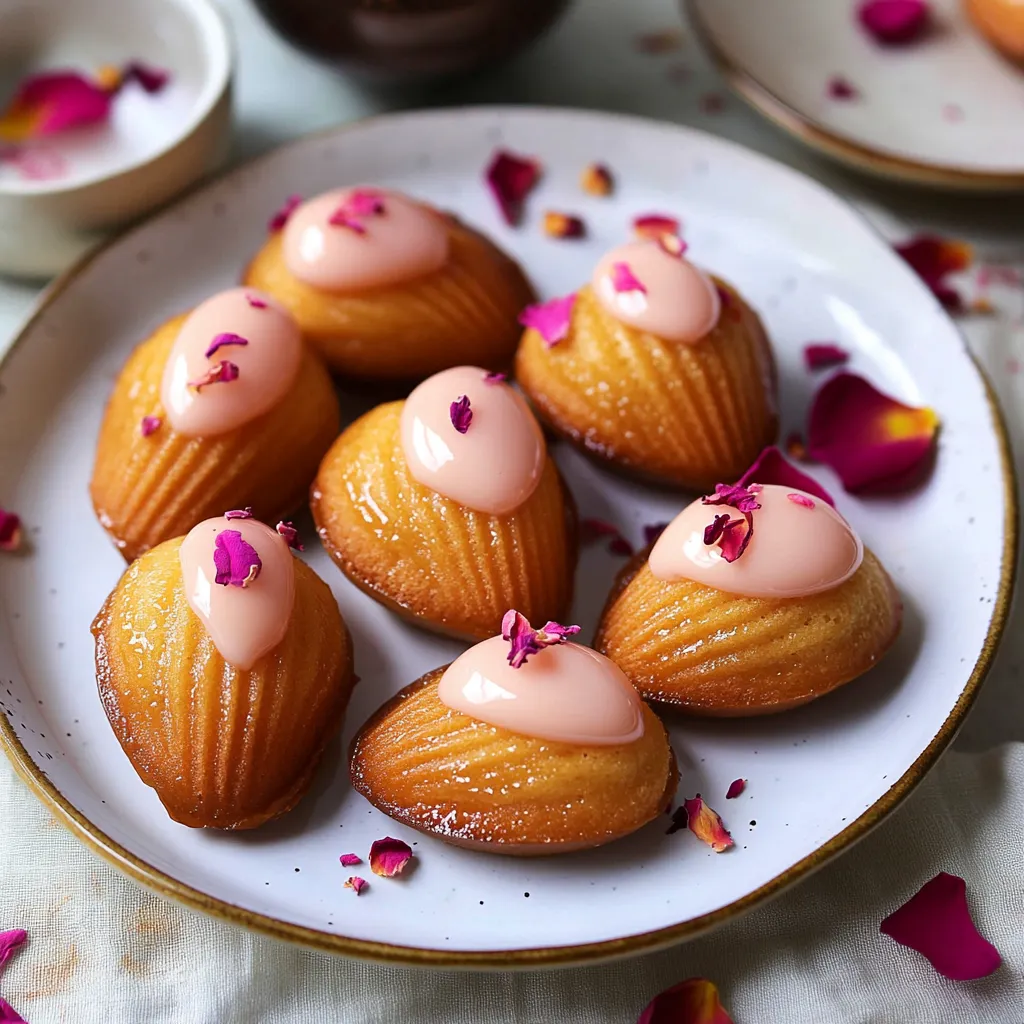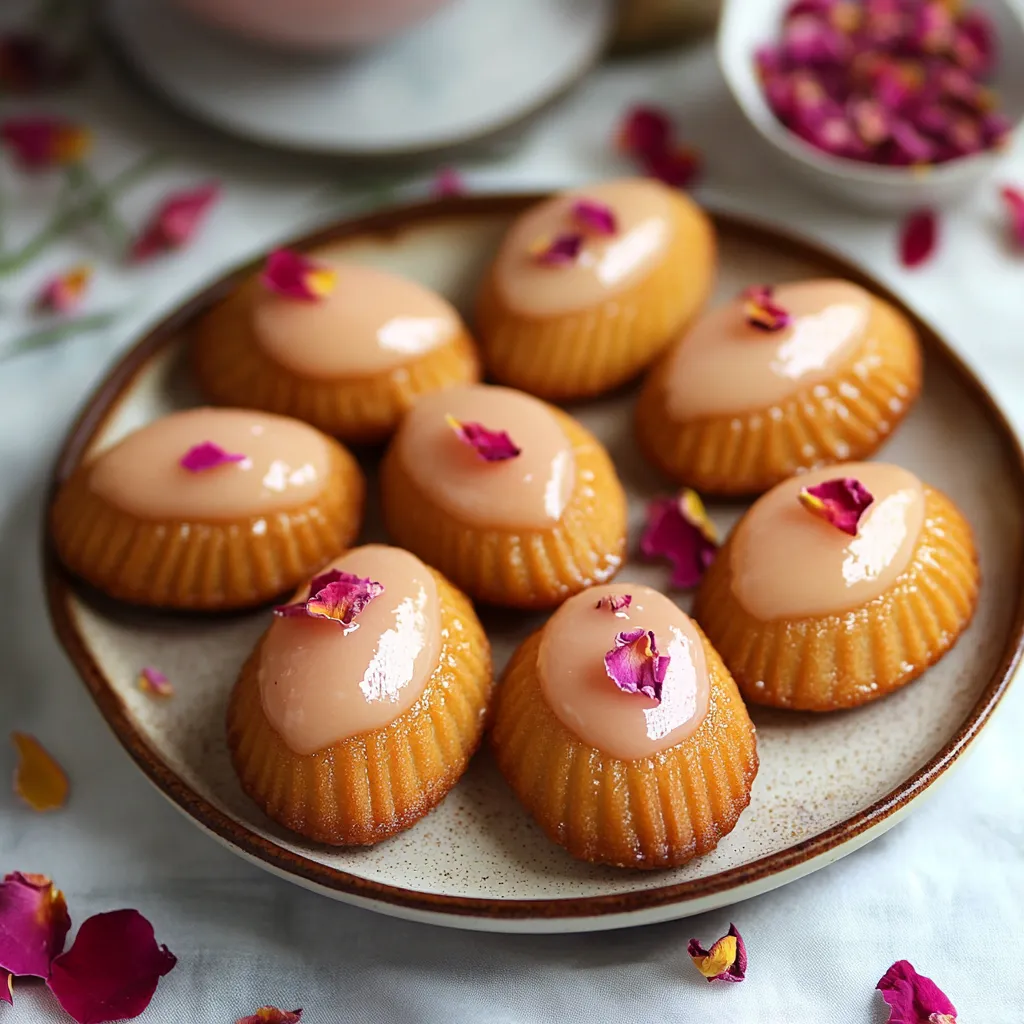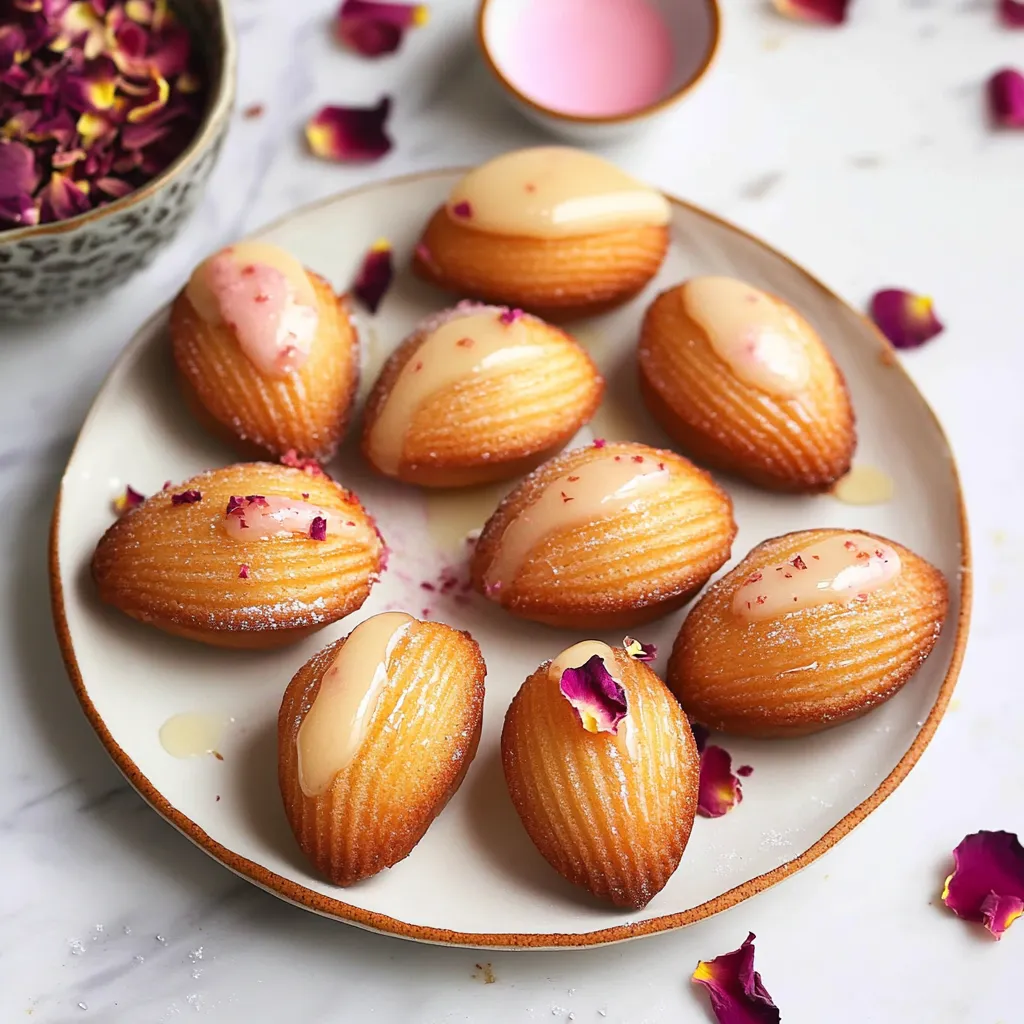 Pin it
Pin it
This delicate rose madeleine recipe transforms a classic French treat into something truly magical with subtle floral notes. The combination of rose water and honey creates an elegant flavor profile that's perfect for afternoon tea, special occasions, or whenever you want to treat yourself to something extraordinary.
I first made these madeleines for my daughter's birthday tea party, and they've become our special tradition. There's something about that distinctive shell shape and the hint of rose that makes even an ordinary afternoon feel like a celebration.
Ingredients
- Unsalted butter: Adds richness and helps create that signature golden exterior
- Eggs: Provide structure and that classic light texture
- Castor sugar: Offers just the right sweetness without being overpowering
- Honey: Enhances flavor and helps achieve that beautiful golden color
- Cake flour: Ensures a delicate crumb that madeleines are known for
- Baking powder: Gives the perfect rise and that characteristic hump
- Rose water: Provides the subtle floral notes that make these madeleines special
- Confectioners' sugar: Creates a smooth glaze that sets beautifully
- Edible dried rose petals: Add visual appeal and enhance the rose flavor
Step-by-Step Instructions
- Prepare the batter:
- Whisk eggs, castor sugar, honey, and rose water for 3-4 minutes until the sugar dissolves completely. This creates the base of your batter and incorporates air for a lighter texture.
- Add dry ingredients:
- Sift the cake flour and baking powder directly into your egg mixture. Whisking thoroughly ensures no lumps remain and helps maintain that delicate texture madeleines are known for.
- Incorporate butter:
- Add your melted butter at the proper temperature (40-50℃) and whisk until completely incorporated. The butter should be warm enough to blend smoothly but not hot enough to cook the eggs.
- Rest the batter:
- Cover the bowl with plastic wrap and refrigerate for at least 1 hour or overnight. This resting period is crucial as it allows the flour to hydrate fully and helps develop that signature hump when baking.
- Prepare for baking:
- Preheat your oven to 400℉/200℃ and properly grease your madeleine pan. Proper preparation prevents sticking and helps achieve that beautiful shell pattern.
- Prepare the batter for piping:
- Gently mix the chilled batter with a spatula to remove air bubbles and loosen the texture. Transfer to a piping bag for neat, consistent filling of the molds.
- Fill the molds:
- Pipe the batter into each mold until 80-90% full. Avoid overfilling to prevent spillover during baking while ensuring enough batter to form the classic shape.
- Bake with temperature adjustment:
- Place the pan in the preheated oven and immediately reduce temperature to 350℉/180℃. Bake for 10-12 minutes until golden brown with a pronounced hump. The initial high heat helps create the signature hump.
- Cool properly:
- Remove madeleines from the pan immediately after baking to prevent them from becoming soggy. Allow to cool completely on a wire rack before glazing.
- Prepare the glaze:
- Sift confectioners' sugar into a bowl, add rose water and just enough water to create a thick, smooth paste. The consistency should coat the back of a spoon but still flow slowly.
- Glaze and decorate:
- Brush the hump side of each madeleine with the glaze, then immediately sprinkle with dried rose petals while the glaze is still wet. This ensures the petals adhere properly.
- Allow glaze to set:
- Place glazed madeleines hump side up until the glaze sets completely, creating a smooth, professional finish.
 Pin it
Pin it
My grandmother taught me the importance of patience with madeleines. She always said the resting period is what separates good madeleines from extraordinary ones. Whenever I make this recipe, I think of her kitchen filled with the scent of butter and flowers.
The Art of the Perfect Hump
The iconic hump on a madeleine isn't just for show—it's a mark of proper technique. The secret lies in the temperature shock. Starting with chilled batter and putting it into a hot oven creates steam that pushes the center up. Some bakers even chill their greased madeleine pans before filling them for an even more dramatic rise. If your madeleines are coming out flat, try increasing your initial oven temperature slightly or making sure your batter is thoroughly chilled.
Storage and Freshness
Madeleines are notoriously short-lived treats, with their texture changing significantly after the first day. For maximum enjoyment, consume them within 24 hours of baking. If needed, store in an airtight container at room temperature for up to 2 days. You can also freeze unglazed madeleines for up to a month—wrap them individually in plastic wrap, then place in a freezer bag. Thaw at room temperature and refresh in a 300℉ oven for 3-4 minutes before glazing.
Flavor Variations
While rose creates an elegant flavor profile, madeleines are wonderfully adaptable. Replace rose water with orange blossom water for a different floral note. Add lemon or orange zest to the batter for a citrus version. For chocolate lovers, fold in 2 tablespoons of cocoa powder with the flour. During the holidays, consider adding a pinch of cardamom or cinnamon to the batter for a seasonal touch. The glaze can also be flavored with extracts or citrus juice instead of rose water.
 Pin it
Pin it
Patience and attention to detail make all the difference in turning good madeleines into an extraordinary treat.
Frequently Asked Questions
- → Why do I need to chill the madeleine batter?
Chilling the batter for at least 1 hour (or overnight) helps develop flavor and allows the gluten to relax. This resting period is crucial for achieving the characteristic 'hump' on the madeleines during baking.
- → What creates the signature madeleine hump?
The signature hump forms from the temperature shock when cold batter enters a hot oven. Starting at a higher temperature (400°F/200°C) and then reducing it creates the ideal conditions for the hump to form.
- → Can I make these madeleines without rose water?
Yes, you can substitute the rose water with vanilla extract, orange blossom water, or even lemon zest for different flavor profiles while maintaining the same delicate texture.
- → How long do rose madeleines stay fresh?
Rose madeleines are best enjoyed the day they're made but will keep in an airtight container at room temperature for 2-3 days. For longer storage, freeze unglazed madeleines for up to 1 month.
- → Do I need a special pan to make madeleines?
Yes, a madeleine pan with shell-shaped molds is necessary to achieve the classic shape. These pans are available in metal (traditional) or silicone versions, with the metal pans producing better browning.
- → What can I use instead of dried rose petals for garnish?
If dried rose petals aren't available, you can substitute with crushed freeze-dried raspberries, pistachios, or a light dusting of pink sugar for visual appeal without compromising the rose flavor.
